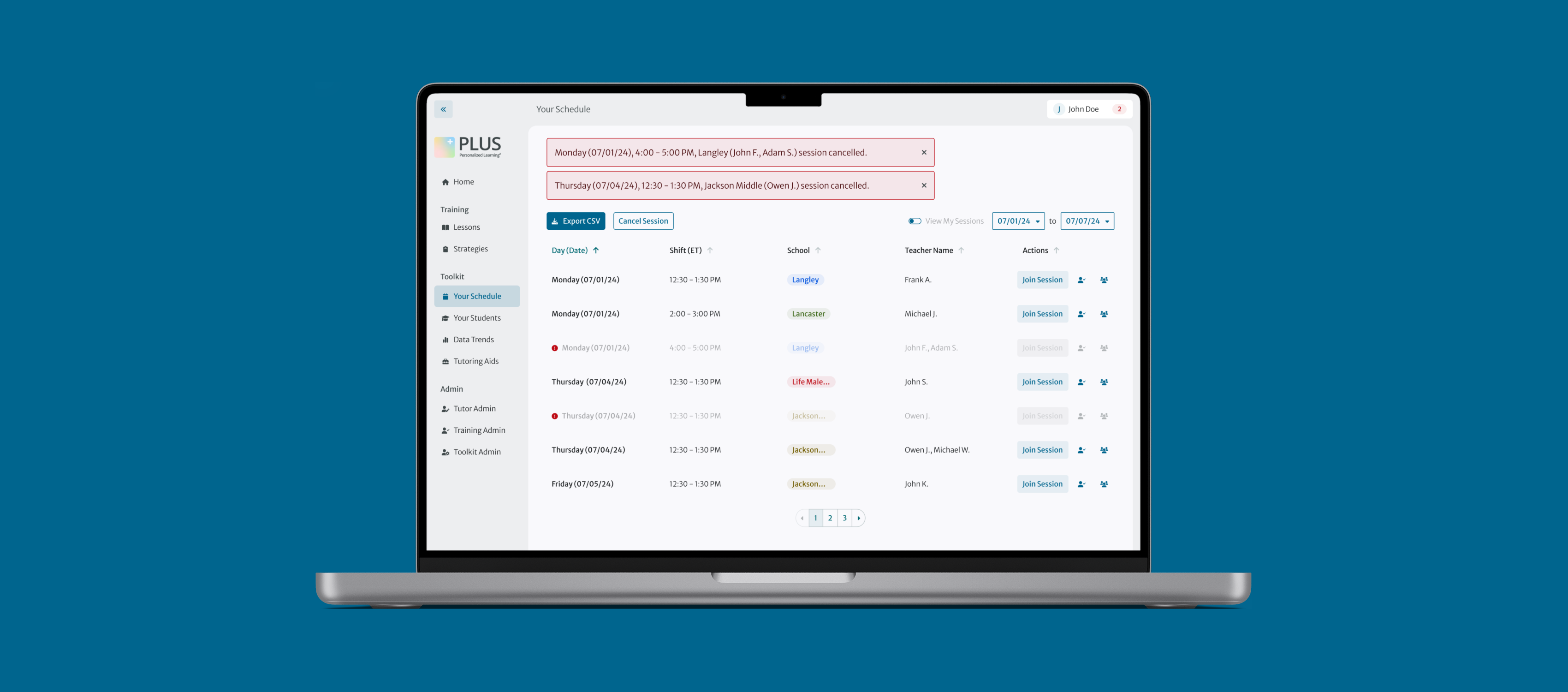What is PLUS?
PLUS (Personalized Learning Squared) is a CMU-based startup intent on improving math learning for 10k+ middle schoolers by providing novel human-AI tutoring opportunities to under-served communities.
Currently, PLUS has helped 3k+ students through 500+ tutors, and has conducted 10k+ total hours of tutoring.
With this many tutors and students, a tutoring session schedule is essential to connecting tutor to student efficiently. However, PLUS' current solution is a universal Google spreadsheet overloaded with info.
My Role
Based on user interviews and insights from tutors, lead tutors, and tutor supervisors, I transitioned the external tutor scheduling Google spreadsheet to a native-app personalized scheduling table.















